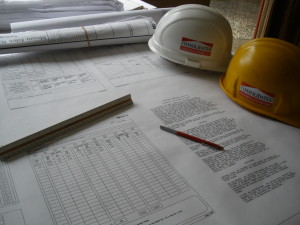CONSOLIDATED
box 588
Monterey, Ca. 93942
(831) 372-2803
When it comes to structures the thing to remember is that the earth holds everything up.
So the obvious place to start is with soil mechanics and determining what type of soil we have. The following is a very brief overview of soil classification.
The unified soil classification system (USCS) established a procedure for classifying soil type. It establishes particle size distribution for granular soils using sieve analisys.
The USCS chart for major classifications are course: sand and gravel and fine is devided into coarse: if less than 50% passing thru #200 sieve the top chart is used. and fine: if more than 50% passing thru #200 sieve the bottom chart is used.
An alternate system is the ASHCE which uses 35%.
If the sample id course then the % of gravel and % of sand need to be determined by measuring the sand that passes thru sieve #4 to establish the sand fraction.
If the sieve #200 pass is 15% and the #4 sieve pass is 55% then there is 15% fine and 85% course. The sand fraction is 55-15=40% sand so gravel is 45% .
The fine portion is clay and silt. If the fine content is less than 5% the sample is low fine content. If fine is more than 12% it must be tested (in between is considered borderline soil)
The group symbols are S for sand G for gravel C for clay and M for silt. These make up the first letter of classification.
The particle size distribution is the second letter of the classification. These consist of W for well graded P for poor graded H for high plasticity and L for low plasticity.
Next is to determine the C sub u (uniformity coeficient) and C sub c (curvature coeficient)
For fine grain a hydrometer analisys test or a sedimentary test is used to determine the velocity that particles settle.
Next is to determine the Atterberg limits for plasticity index (PI)= LL (liquid limit)-PL (plastic limit).
Next is to determine the void ratio, perosity, water content and degree of saturation.
The results will give soil types as follows:
Gravels: GW GP GM GC
Sands: SW SP SM SC
Silts: ML MH
Clays: CL CH
Organic soils: OL OH
Peat: PT
So forinstance SWMH would be well graded sand and high plastic silt.



Recent Comments